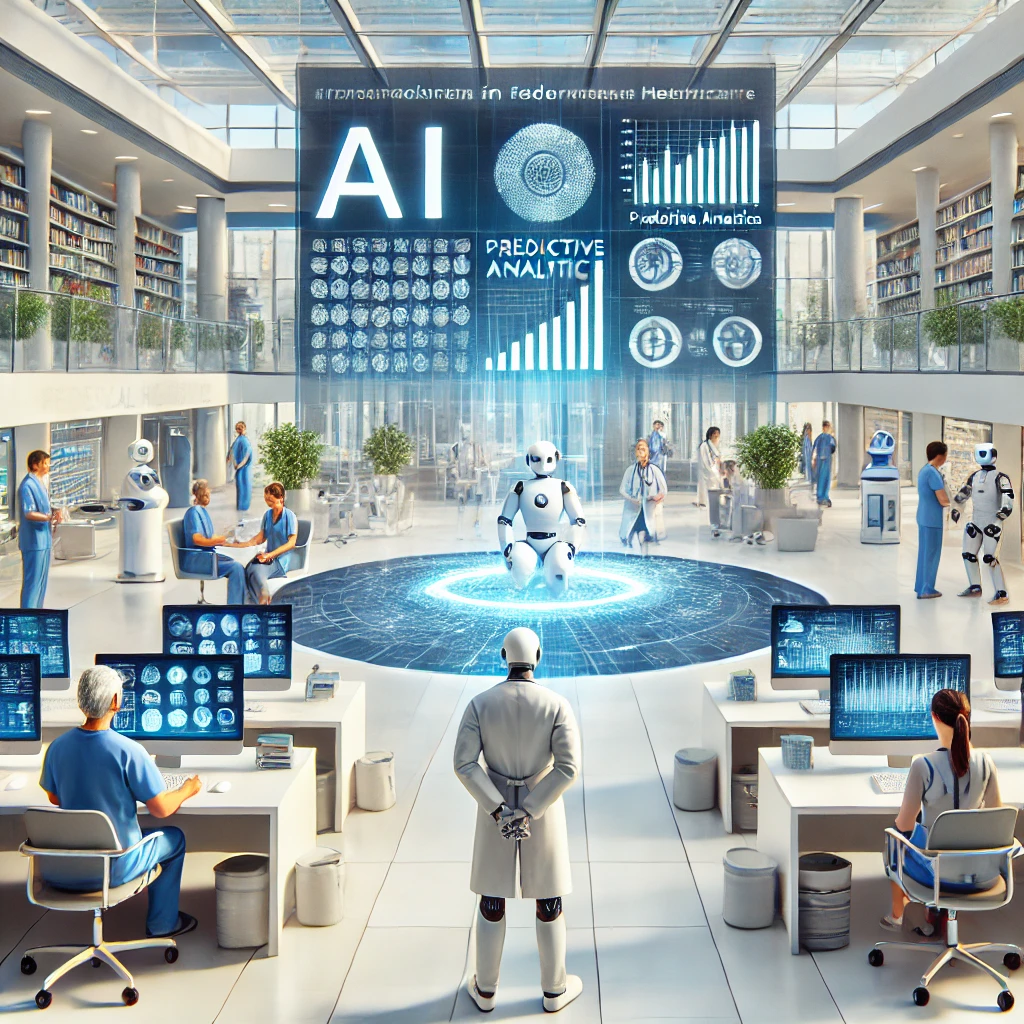In an era where healthcare demands continue to rise, Federal Healthcare organizations face immense pressure to deliver exceptional care to patients while operating under tight constraints. Advanced technologies such as Artificial Intelligence (AI), Machine Learning (ML), and automation are rapidly becoming game-changers in overcoming these challenges. These tools not only enhance efficiency but also unlock new ways to care for patients and save more lives.
The Challenge: A Growing Demand for Better Care
Federal Healthcare systems serve a diverse and expansive population, including veterans, active-duty military personnel, and underserved communities. These systems often struggle with limited resources, administrative bottlenecks, and an increasing need for timely, personalized care. In this environment, AI/ML and automation present a unique opportunity to address these challenges head-on.
AI-Powered Insights for Better Outcomes
One of the most significant impacts of AI/ML lies in its ability to analyze vast amounts of data quickly and accurately. For Federal Healthcare organizations, this means harnessing patient data to predict outcomes, personalize treatments, and streamline operations. Key applications include:
- Predictive Analytics: AI models can analyze medical records to identify patients at high risk of developing chronic illnesses, enabling proactive interventions. (Learn more about predictive analytics in healthcare from Harvard Business Review).
- Personalized Medicine: By analyzing genetic, environmental, and lifestyle factors, ML algorithms help design tailored treatment plans that increase the likelihood of success.
- Enhanced Diagnostics: AI-powered diagnostic tools can detect diseases like cancer or heart conditions earlier and with greater accuracy than traditional methods. (See a detailed report on AI in diagnostics at NIH).
Automation to Reduce Administrative Burdens
Administrative tasks often consume a significant portion of healthcare providers’ time, detracting from patient care. Automation can alleviate this burden by:
- Streamlining Documentation: Automated transcription and note-taking tools allow providers to focus more on their patients and less on paperwork.
- Optimizing Scheduling: AI-driven scheduling tools ensure optimal allocation of resources, reducing wait times and improving patient satisfaction.
- Claims Processing: Automating claims submissions and approvals minimizes delays in reimbursements, ensuring smoother operations.
Saving Lives with Real-Time AI
Real-time AI applications are revolutionizing how emergencies are handled in Federal Healthcare facilities:
- Emergency Response Optimization: AI tools analyze incoming patient data to prioritize care during emergencies, such as natural disasters or mass casualty events. (Discover more about AI-driven emergency response tools in the latest McKinsey report).
- Telemedicine with AI Support: Automated symptom checkers and decision-support systems empower remote healthcare providers to make faster, more informed decisions.
The Ripple Effect: Beyond Healthcare Facilities
The integration of AI/ML and automation doesn’t just benefit patients; it strengthens the entire Federal Healthcare ecosystem. By freeing up providers’ time, reducing operational inefficiencies, and delivering better patient outcomes, these technologies contribute to a healthier and more resilient population.
Our Commitment to Innovation
At Colossal, we understand the critical importance of leveraging AI/ML and automation to transform healthcare delivery. By helping Federal Healthcare organizations integrate these cutting-edge solutions, we’re not only enabling better care but also supporting the ultimate mission: saving lives.
Take Action Today
Curious about how AI/ML and automation can transform your healthcare operations? Contact us today for a consultation or demo of our solutions. Let’s work together to deliver innovative care solutions that save lives and improve outcomes for patients across the nation.













Leave a Comment